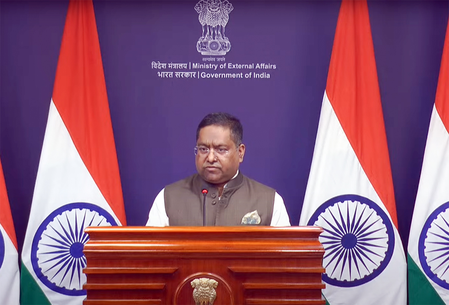
Dakar, Feb 18 (IANS) The HIV/AIDS prevalence rate in Senegal stands at just 0.3 per cent, Executive Secretary of the National Council for the Fight Against AIDS Safietou Thiam said.
The low prevalence is attributed to the 70 per cent access to antiretroviral therapy (ARV) for people living with the disease, as well as a collective commitment from the population, particularly Senegalese youth, and the efforts of the Senegalese government, Thiam said during the launch ceremony of the Youth Mobilisation Week Against AIDS held in Dakar.
However, she pointed out disparities in HIV prevalence among young people, noting a growing number of new infections in the 15 to 24 age group.
In Senegal, “seven out of ten new infections have occurred among young people under the age of 35,” Thiam said, stressing that the silence surrounding the sexual health of young girls and boys makes them vulnerable to infections such as HIV/AIDS, Xinhua news agency reported.
According to the World Health Organisation, HIV is a virus that attacks the body’s immune system. Acquired immunodeficiency syndrome (AIDS) occurs at the most advanced stage of infection.
HIV targets the body’s white blood cells, weakening the immune system. This makes it easier to get sick with diseases like tuberculosis, infections, and some cancers.
HIV remains a major global public health issue, having claimed an estimated 42.3 million lives to date. Transmission is ongoing in all countries globally.
There were an estimated 39.9 million people living with HIV at the end of 2023, 65 per cent of whom are in the WHO African Region.
In 2023, an estimated 630,000 people died from HIV-related causes and an estimated 1.3 million people acquired HIV.
There is no cure for HIV infection. However, with access to effective HIV prevention, diagnosis, treatment and care, including for opportunistic infections, HIV infection has become a manageable chronic health condition, enabling people living with HIV to lead long and healthy lives.
WHO, the Global Fund and UNAIDS all have global HIV strategies that are aligned with the SDG target 3.3 of ending the HIV epidemic by 2030.
By 2025, 95 per cent of all people living with HIV should have a diagnosis, 95 per cent of whom should be taking lifesaving antiretroviral treatment, and 95 per cent of people living with HIV on treatment should achieve a suppressed viral load for the benefit of the person’s health and for reducing onward HIV transmission. In 2023, these percentages were 86 per cent, 89 per cent, and 93 per cent, respectively.
In 2023, of all people living with HIV, 86 per cent knew their status, 77 per cent were receiving antiretroviral therapy and 72 per cent had suppressed viral loads.
–IANS
int/jk/vd




